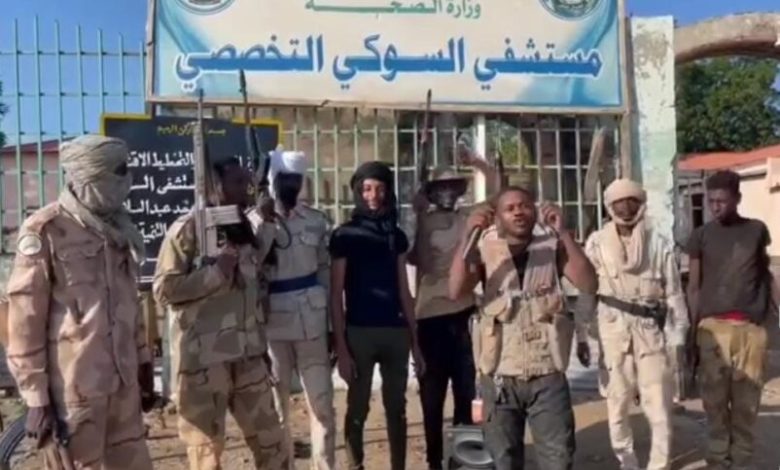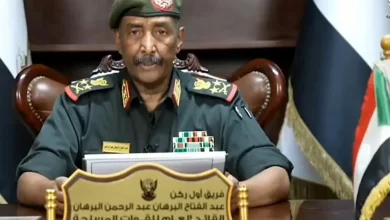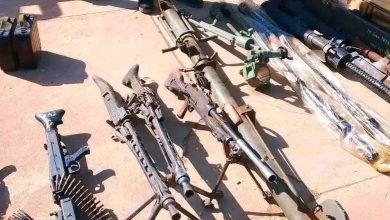Reports
Leadership Succession Struggles in the Rapid Support Forces Ignite Widespread Internal Clashes

Sudan Events – Agencies
The Armed Conflict Location & Event Data Project (ACLED) revealed on Monday that internal clashes within the Rapid Support Forces (RSF) have emerged, stemming from a leadership succession struggle in Khartoum, Sennar, and North Kordofan.
Many RSF leaders have been killed in battles or through aerial bombardments, significantly crippling their ability to seize new territories, unlike the previous year when they controlled most of Khartoum, Gezira State, and West, South, East, and Central Darfur, along with other regions in Kordofan.
In a report obtained by *Sudan Tribune*, ACLED stated that “the leadership succession struggle within the RSF has sparked further internal clashes in Khartoum, Sennar, and North Kordofan.”
The report highlighted the complex nature of the RSF, which is built on a militia structure.
It added, “The RSF’s composition, made up of different militias with varying agendas, often leads to internal conflicts, as these groups use the national war to further their local interests.”
The report mentioned that two RSF groups, one from the Rizeigat tribe and the other from the Ziyadiya ethnicity, engaged in violent clashes in the city of Mellit, North Darfur, on August 26.
The armed conflict erupted “when Ziyadiya fighters, who were protecting the market, attempted to stop Rizeigat fighters from looting the market.”
ACLED emphasized that the Mellit clash was unrelated to any previous conflicts, but disputes over land and natural resources have fueled ongoing conflicts, such as the continued clashes between the Salamat and Beni Halba tribes, and between the Salamat and Habaniya tribes in 2023.
ACLED collects data, analyzes, and maps crises, while also gathering information on the dates, perpetrators, locations, fatalities, and types of political violence events worldwide.
The project reported that both the army and RSF have intensified their use of explosives and long-range violence in several areas, particularly in Khartoum and the Darfur region, even as the frequency of battles decreases.
It noted that both the army and RSF have limited capacity to expand their control, as their forces are fighting on multiple fronts in North Darfur and Sennar.
The RSF conducted the majority of its bombardments in August in the Karari area of Omdurman, the third-largest city in the capital, Khartoum.
Karari is considered the safest location in Khartoum, as the army has prevented any RSF incursions into the area since the war’s outbreak. It serves as a supply line to the northern and eastern states of Sudan, which are distant from the bloody conflict.
The report stated that the army increased the number of airstrikes against RSF forces in Darfur, attributing this to the receipt of 15 new fighter jets provided by Russia and Egypt.
It added, “The air campaign appears to aim at disrupting the RSF’s mobilization of thousands of fighters who are reportedly preparing for a renewed offensive on the city of El Fasher, the capital of North Darfur State.”
ACLED documented 50 army airstrikes across all Darfur states between August 1 and September 6, compared to only three airstrikes in the five weeks preceding this period.
All these airstrikes were linked to the ongoing battle in El Fasher, which had devastating effects on the states, including the destruction of the teaching hospital in El Daein, the capital of East Darfur State, resulting in the deaths of 18 civilians.
Since the previous Thursday, the RSF has intensified its attacks on El Fasher, which is under the control of the army and allied movements, who have successfully repelled RSF assaults since May 10.
The conflict in El Fasher has had disastrous consequences for the region, as RSF forces have blocked any supplies from reaching the city since the siege began in April. There are fears that thousands could die of hunger if aid and medicine do not reach them soon.



